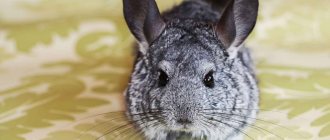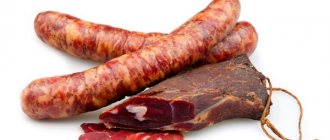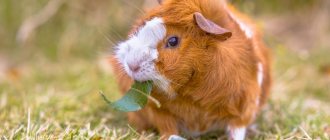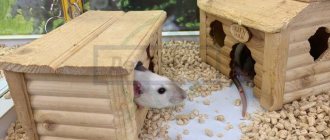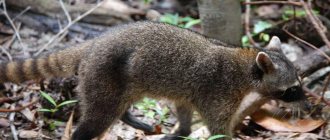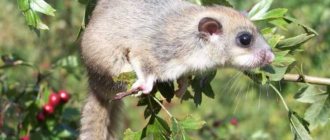The raccoon family belongs to the genus of mammalian predators. These animals gravitate towards hunting and forceful resolution of conflicts. In order to adequately join the food chain of the Earth's biosphere, nature endowed raccoons with a “bad” character, sharp claws and fangs. Having acquired a cute and charming weasel in a mask, a lot of questions arise, the first of which is what to feed your pet raccoon. I propose to talk on this topic, and also touch on the question of what you need to know about raccoons, in general.
Description, structure, characteristics
The name "raccoon" comes to us from the Indian word "Arakun", which translates as "scratching with one's hands."
Raccoons are carnivorous mammals belonging to the raccoon family, which includes four species of these animals (we will describe each species in more detail below). Also close relatives of raccoons are raccoon dogs (they are often confused with raccoons), nosuhi, kakimitsli and kinkajou. And the raccoon’s distant relatives even include dogs and pandas.
The most common among raccoons is the raccoon, which is also called the “gargle bear” or “washing bear.”
The body length of raccoons is usually 45-60 cm; the average weight of a raccoon, depending on the species, can vary from 2-5 to 8-15 kg. Moreover, males are often larger than females. The body structure of raccoons is a bit like
a fox or a dog. But the paws of a raccoon are an important distinguishing feature of these animals; they have very elongated pads, somewhat reminiscent of human palms. Thanks to the similar structure of their paws, all raccoons have excellent grasping abilities.
Raccoons climb trees with ease and can manipulate various small objects.
A raccoon's tail is long and usually bushy. A raccoon's fur depends on its species; for example, the raccoon's fur is short, while the raccoon's, Cosemelle and Guadalupe raccoons' fur is, on the contrary, longer and fluffier. As for color, all raccoons are grayish-brown in color, and their tail is painted with transverse black and white stripes.
The raccoon's head is very wide, has a short and sharp muzzle, and small and rounded ears.
Interesting fact: all raccoons not only climb trees with ease, but also swim well, and can swim even in cold water, which is facilitated by the special composition of their fur, consisting of 90% thick undercoat, as if specially adapted by nature to protect against cold water.
Special signs
Those who have seen a raccoon at least once, even in a picture, will easily recognize it the next time they meet it. This animal has an interesting and memorable appearance.
It is not difficult to describe a raccoon. The pointed face looks like it's wearing dark glasses, and a prominent striped tail completes the look. The fur on the back is darker than on other parts of the body. A black stripe runs from the tip of the nose to the small rounded ears. There is a white edge around the animal’s “mask,” and the long hairs on its cheeks look like whiskers.
The body of a raccoon is from 45 to 65 cm, stocky and dense. Average weight is approximately 6-7 kg. The fluffy tail consists of alternating black and gray rings, its length is about 25 cm. The animal’s height is small - 35 cm.
Habitats
Where do raccoons live? Raccoons are native to North and South America and can be found in forests from Canada to Argentina. With the discovery of America by Europeans, raccoons came to Eurasia and one of their species, the striped raccoon, was able to take root quite well in our latitudes. In particular, populations of the striped raccoon have been created in many European countries and also in the Caucasus.
As for our country, Ukraine, in the hometown of the author of the article - Lviv, there is a whole raccoon farm - “
Raccoon House”, that is, you can come to visit the raccoons, play with them; such an event will definitely be unforgettable for children. To learn more about the “Raccoon House” in Lviv, follow the link.
Raccoon's house.
Diet of adults
Raccoons become adults at one year of age. In order to identify your pet’s favorite dish, you need to carefully observe it. At home, raccoons love to play pranks and act up in order to be given something tasty.
Together with its owner, the raccoon can eat apples, cookies and pizza. As soon as the raccoon’s health begins to noticeably deteriorate, you should immediately contact a veterinarian. Under no circumstances should you give your raccoon fatty foods.
Character and lifestyle
Raccoons have a friendly character, they are peaceful, active and inquisitive. However, despite their peacefulness, they are not cowardly, therefore, in case of danger, they are able to bravely defend themselves, bite and scratch. They can also rumble threateningly, trying to scare a potential enemy. In particularly dangerous situations, raccoons may flee or resort to a cunning trick - pretending to be dead.
Despite their friendliness and sociability, in natural conditions raccoons prefer to lead a solitary lifestyle, coming together only for mating and during hibernation. And yes, raccoons, like
Bears go into hibernation in winter, and the biological mechanisms of hibernation in raccoons are similar to those of bears; hibernation itself in raccoons lasts depending on the duration of the cold period. Canadian raccoons sleep the longest, in which hibernation can last up to 5 months, but raccoons living in the warm tropics of Central America do not hibernate at all, due to the lack of winter in their habitats.
Sleeping raccoon.
Raccoons are crepuscular animals, which means they are most active in the evening and at night, preferring to sleep in their cozy den during the day. But when evening comes, they go out in search of food. Although, if necessary, these animals can change their established daily routine.
Recommendations from experts
Very often, new raccoon owners get confused and do not understand what raccoons eat on a daily basis. Professional breeders advise making a special lunch for their pets that raccoons will definitely like:
- Place one kilogram of minced chicken in a large saucepan with water and bring to a boil;
- add your choice of 1 kilogram of cereal, rice or buckwheat;
- bring to a boil and simmer over low heat for about ten minutes;
- then leave for half an hour;
- While the porridge is cooling, fruits and vegetables need to be washed and grated;
- mix fruits and porridge, season with butter;
- several times a week cottage cheese and a couple of chicken eggs are mixed into the porridge;
- Food can be stored for no more than two days in the refrigerator.
Enemies in nature
In turn, raccoons themselves can become prey for other larger predators: bears,
wolves, lynxes, coyotes, wolverines and cougars. In an attempt to escape from their enemies, raccoons often resort to trickery - pretending to be dead, but when this trick does not work and it is not possible to escape, they desperately resist, fighting with all their might for their lives. However, unfortunately, this is not always possible.
Also, to a certain extent, humans are the enemy of raccoons; American Indians sometimes killed these animals for their fur. Later, white colonists also began to practice hunting raccoons. Fortunately, the active reproduction of these animals has not put their population at risk.
Predatory habits
Everything a raccoon eats is obtained at night. Nature has endowed them with acute vision, smell and hearing. In addition, the little hunter is helped by a special mechanism - vibrissae. These are ultra-sensitive hairs located on the head, paws and belly of the animal. They detect the movement of air masses that are reflected from various objects. Each antennae has many nerve endings. To obtain food, the animal uses only the nearby territory with a radius of about one and a half kilometers.
Raccoon paws are the main tool in hunting. They allow the animal to quickly hide from larger predators, deftly climb a tall tree, or hang on one “arm.” Any acrobat will envy his refined movements. If the striper does not have time to hide from the threat, it can feign death. Raccoons live for about five years.
Types, photos and names
As we wrote above, there are 4 types of raccoons in nature, and below we will describe them in more detail:
Raccoon gargle
This raccoon got its unusual name due to its habit of rinsing caught prey in water. Thus, the clean raccoon cleans it of sand. It is also the most common among raccoons, found throughout North and Central America, and more recently in Europe. Everything we wrote above concerns primarily raccoons.
Racoon crayfish (aguara)
A distinctive feature of this raccoon is a characteristic pattern around the eyes, somewhat reminiscent of a bandit mask. This raccoon has shorter fur and a more streamlined body. It got its name from its gastronomic love for crayfish. Lives in the jungles of Central and South America.
Cozumel raccoon
This species of raccoon is very rare, as it lives in a limited area, namely on the small island of Cozumel in the Caribbean Sea. It also differs from its other relatives in its brownish-grayish fur and the presence of a yellow tint on the tail.
Guadalupe raccoon
This species of raccoon is currently critically endangered and is listed as
Red Book. It lives in the humid areas of Guadeloupe, preferring to settle in marshy areas, as well as near reservoirs, rivers and lakes. Its appearance is similar to a striped raccoon.
Basic principles of feeding
Raccoons are beautiful, smart, inquisitive, and most importantly, active and very cunning. These are nocturnal animals, so be prepared in advance for the fact that you may not be allowed to sleep.
Based on the peculiarities of the regime and the recommendations of veterinarians, the raccoon needs to be given food three times a day, the feeding schedule is as follows: in the morning (or when the animal goes to bed), in the evening at six to seven o’clock and the last feeding is at ten to eleven o’clock, maximum - midnight.
Try not to overfeed the animal, although they are quite active by nature, a home lifestyle can contribute to excess weight gain and affect health.
In cold winters, raccoons can hibernate, this also applies to pets; of course, there is no need to be afraid that the animal will sleep for several months, but a raccoon can take a nap for a week or two during frosty periods. And your minke will wake up only when he gets hungry.
Reproduction
Raccoons breed strictly once a year, during their mating season, which occurs either at the end of winter or at the beginning of summer (depending on the raccoon’s habitat, the further south it lives, the faster its mating season begins, for raccoons living in our temperate latitudes, the mating season is in early summer).
These animals have no special mating rituals, everything is extremely simple - the male finds the female by smell and mates with her. The pregnancy of a female raccoon lasts 2 months; birth occurs in some secluded place, usually a hollow tree or an abandoned hole of another animal.
From 3 to 8 small raccoons are born at a time. Baby raccoons, like kittens, are born blind and helpless, and at first they are under the full care of their mother, who feeds them with her breast milk. But after a month of their life, they begin to grow rapidly, by 4-5 months they are already able to obtain food on their own, and by the first year, raccoons reach sexual maturity and become adults.
Features of feeding
The owner must be attentive and strict. These charming animals love to beg for various sweets and forbidden foods. You should always remember that succumbing to provocation can harm your pet. Such rewards often lead to obesity and digestive system disorders.
In raccoons, the digestive system is a weak point. Up to 1 year after each feeding, babies need to have a tummy massage. Massage ensures the passage of food through the gastrointestinal tract.
New raccoon foods should be introduced gradually. After feeding, monitor your pet’s well-being and stool. If there is no negative reaction from the body, then the product is suitable for feeding.
How much to feed
Babies under 1.5 months of age need to be fed every 3-4 hours. Adult raccoons need three meals a day. Since the peak of activity occurs at night, it is necessary to feed the raccoon in the late afternoon. Usually the first meal is before bed, the second in the evening, the third at night.
Raccoons at the age of 3 months can already be transferred to independent feeding from a bowl. From 6 months you can start introducing vegetables, berries and fruits into your diet.
Keeping at home
Raccoons make excellent pets due to their friendly nature. Just don’t get a raccoon if you live in a cramped apartment, since these animals need space, and they won’t be free-range like cats or dogs either.
It is very advisable to allocate a whole separate room for the raccoon; it will also be its enclosure, in which the animal will feel free. Since raccoons are very smart animals, you can have fun and play with them, but you should also be careful, because if the raccoon thinks that it is in danger, it can bite and scratch. Raccoons are especially aggressive during their mating season. Also, during the mating season, a male raccoon can mark his territory, which will be fraught with a very unpleasant odor. But in general, a raccoon can be trained to go to the litter box, almost like a cat or dog.
It is also worth considering that raccoons can be very mischievous, even hooligan animals; while living in a house, they can do all kinds of mischief, for example, break all the dishes in the kitchen, throw over an expensive TV, and so on. To avoid this, they should not be released from their enclosure room (at least without supervision), having first removed all valuable items from there.
And raccoons are crepuscular animals, which means that if you have such a pet in the house, you will need to adapt to its natural rhythm; the raccoon will most likely sleep during the day, but get rowdy in the evening and at night. You will also need to feed him in the evening and at night, in general, if you are a “night owl” according to your biorhythm, then with a raccoon it will be easier for you than for people who are “larks”.
Living space
Despite its small size, a raccoon requires more space than even the largest dog. And if a bed in a secluded corner is enough for the latter, then this will be too little for a gargle. Caring for an animal requires a well-equipped home, so you should take care of this even before a raccoon appears in the apartment.
- The animal needs a cage, even if it is planned that it will move freely around the apartment. The gargle is placed in a cage at night and for periods when everyone leaves the house. This is done for the safety of both the animal and the apartment.
- Inside the cage you can put a “house”, which is sold in a pet store and is intended for cats or small dogs. The animal needs such a home so that it can hide while sleeping.
- There should be a basin of water next to the house. Rinsing is a natural process for a raccoon; there is no need to interfere with it. It is important that the water is always clean!
- It is imperative to place a tray in the cage and teach the striper to go in it, and not in any other place convenient for him.
- Even adult raccoons love to play, so you will need to purchase toys for the animal. It is best to choose soft ones, but without synthetic padding (it is extremely dangerous for the animal), as well as various rattles, rollers, spinners and those toys where you can take something out and then put it back in. In general, the raccoon will be delighted with anything that can be reached with its paw.
We suggest you familiarize yourself with Breeding pheasants at home for beginners: features and tips Having arranged a space for an exotic pet, you can move on to other pressing issues: how to train, what to feed, etc.
This is interesting: How does reproduction occur in insects?
What to feed
What to feed your pet raccoon? A partially omnivorous raccoon can be fed with the same things it has in its natural environment: these are various berries, fruits, and nuts. In addition, raccoons can be fed with specialized food for cats and dogs, but only premium food. You can give meat and fish, both raw and boiled, the main thing is not too fatty. Chicken, beef, turkey, veal and rabbit are excellent meats for raccoons. Raccoons eat excellent fruits: apples, pears, grapes, bananas, peaches, plums. Vegetables that will be useful to raccoons include: carrots, fresh peas, asparagus, and zucchini.
What else can you offer raccoons?
Dairy
Pet raccoons need a varied diet. In particular, it is necessary to gradually introduce dairy products: milk, cottage cheese, yogurt, kefir, fermented baked milk, sour cream, curd cheese.
Nuts and dried fruits
Do not feed nuts and dried fruits in large quantities. Nuts are too fatty and dried fruits contain a lot of sugar, both of which can cause obesity. Nuts and dried fruits are given to raccoons as food or treats. Allowed nuts: almonds, hazelnuts, walnuts, pistachios.
Interesting Facts
The legend of "hands"
The five-toed paws of a raccoon are interestingly designed. They are equipped with sharp claws that allow the predator to deftly climb, even upside down. Their mobility is so high that the animal uses its paws like a human. What a raccoon eats, it eats while sitting on its hind legs, and with its “hands” it puts pieces of food into its mouth.
The Indians claim that the raccoon was once a person, so they do not eat its meat. According to legend, the swindler who fooled everyone around his finger went unpunished for a long time. The main Spirit did not like this, and he turned the villain into a raccoon. For good behavior, the animal was returned to “human” hands.
Video
And finally, an interesting documentary about raccoons.
Author: Pavel Chaika, editor-in-chief of Poznavaika magazine
When writing the article, I tried to make it as interesting, useful and high-quality as possible. I would be grateful for any feedback and constructive criticism in the form of comments on the article. You can also write your wish/question/suggestion to my email [email protected] or Facebook, with respect, the author.
Author page
This article is available in English -
Raccoon.
Price
An exotic animal can be purchased at a special nursery. The price of a striped raccoon depends on a number of factors: age, color, physical characteristics, species. The cost ranges from 15,000 to 30,000 rubles. Buying from private sellers may result in the purchase of an extremely aggressive and sick animal.
The striped raccoon in the photo always looks like the cutest creature. Buying a pet often disappoints inexperienced owners. Knowledge of the peculiarities of keeping, the ability to raise predatory pets, responsibility for the small life of a natural inhabitant will create harmony in the relationship between an interesting animal and a person.
Bibliography
- Life of animals. Volume 7. Mammals. Ed. V.E. Sokolova. M., "Enlightenment", 1989.
- Mammals: a complete illustrated encyclopedia. Book 1. Ed. D. MacDonald. M., "Omega", 2007.
- https://animaldiversity.org/
- https://www.itis.gov/servlet/SingleRpt/SingleRpt?search_topic=TSN&search_value=180574#NULL
- .bucknell.edu/biology/resources/msw3/browse.asp?id=14001658
- https://en.wikipedia.org/wiki/Procyon_(genus)
- https://www.iucnredlist.org/search?query=procyon&searchType=species
- .html
Author of the article: Baranov Sergey Alexandrovich, zoologist
Did you like the article? Share with your friends:


